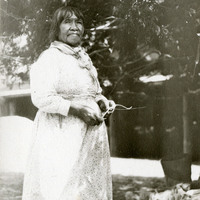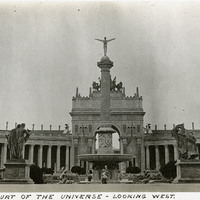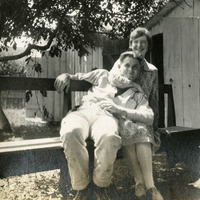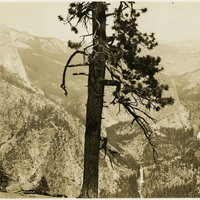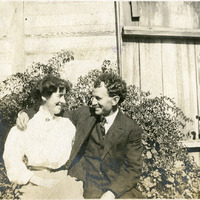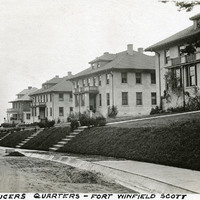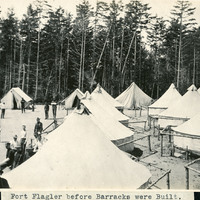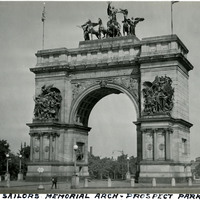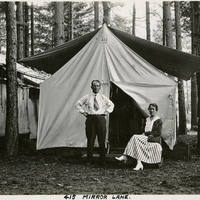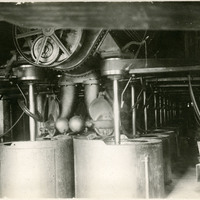Search William M. McCarthy Photograph Collection
- Filters:
- Type
- Still Image 3077
- Language
- English 3077
Search Results 1431 to 1440 of 3080
-
No caption, c. 1935. Lucy Parker Telles, a Mono Lake Paiute, lived in the Yosemite Valley. She was part of a group of Native American women who became well-known for their intricate basket weaving.
Date: 1935
-
Caption: " Court of the Universe - Looking West," with the Fountain of The Rising Sun (Adolph A. Weinman, sculptor), at the Panama-Pacific International Exposition.
Date: 1915
-
No caption. An unidentified man and woman sitting on a bench near the Russian River, c. 1920. See also 96-07-08-alb04-227 and 228.
Date: 1920
-
No Caption: Grace and William McCarthy sitting together at an unidentified location, c. 1906.
Date: 1906
-
Caption: "Officers Quarters -- Fort Winfield Scott," c. 1912. Shows a row of multi-story homes along a landscaped street. Fort Winfield Scott was a coastal artillery post at the San Francisco Presidio. Originally named Fort Point, it was part of an effort by the U.S. government to protect the Golden Gate, entrance to the San Francisco Bay. Built between 1853-1861, the fort included emplacements for 141 guns but never fired a weapon in defense of the Bay. Its name was officially changed in 1882 to Fort Winfield Scott. This only lasted four years, until 1886 when the fort was officially downgraded to a sub-post of the San Francisco Presidio and the name discontinued. It was resurrected in 1912, with the establishment of a coastal artillery fortification at the Presidio, called, once again, Fort Winfield Scott.
Date: 1912
-
Caption: "Fort Flagler before Barracks were Built.," c. 1899-1906. The coastal artillery fortification Fort Flagler was established in 1897 and activated in 1899. Most of the fort's buildings and batteries had been completed by 1907. Fort Flagler was part of the "triangle of fire," three coastal defense fortifications (Fort Casey, Fort Worden, and Fort Flagler) guarding the entrance to Puget Sound. Fort Flagler was decommissioned in 1953, and purchased by the State of Washington in 1955 for use as a state park.
Date: 1899
-
Caption: "Soldiers and Sailors Memorial Arch - Prospect Park - Brooklyn," c. 1925. (John H. Duncan, architect) The Soldiers' and Sailors' Arch was built between 1889 and 1892, and dedicated on October 21st, 1892 to honor the "Defenders of the Union, 1861-1865."
Date: 1925
-
Caption: "Mirror Lane - Camp Curry," c. 1917. William and Grace McCarthy pose in front of their tent at what was then called Camp Curry. Yosemite's Half Dome Village, established by David and Jennie Curry in 1899, was originally called Camp Curry, and then later Curry Village. It was designed to provide cheaper accommodations for Yosemite tourists than the resort hotels. The couple rented out furnished tents and provided amenities such as a dining tent. As time progressed, the amenities increased, and some hard-sided cabins created.
Date: 1917
-
No caption. Unidentified machinery at the Crockett Sugar Mill, c. 1906.
Date: 1906


